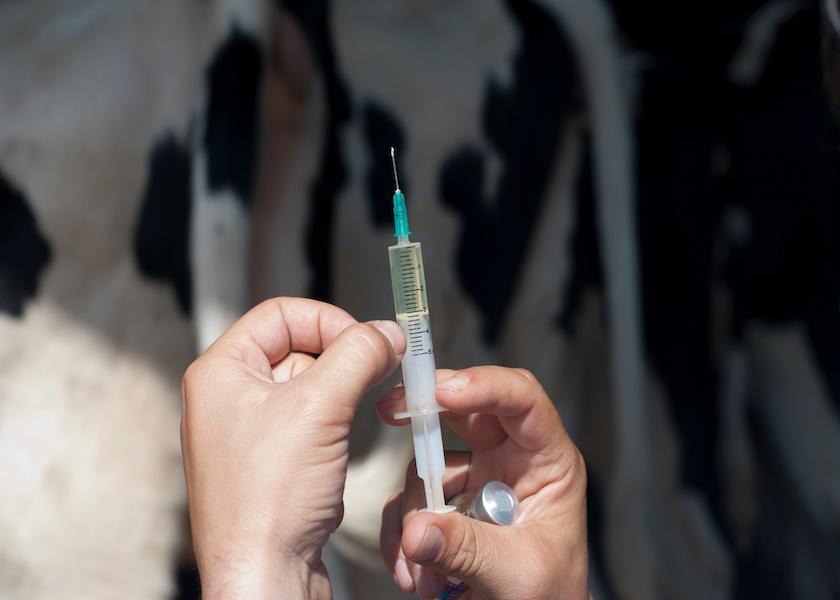Reproductive Hormones Found to Impact Gut Microbiota

Increasing awareness of the importance of microbial populations in proper functioning of various body systems led a group of Chinese researchers to explore what, if any, influence the use of reproductive hormones has on the gut microbiota of cattle.
Researchers at Inner Mongolia Agricultural University, Hohhot, China, recently explored whether or not the bacterial population in the intestine of grazing Simmental cattle changed over the course of estrous synchronization for breeding.
Their study, published in the journal, Animals, evaluated 14 postpartum Simmental cows on a fixed-time A.I. protocol. The researchers noted that there is a large amount of research-based evidence that shifts occur in the vaginal and uterine microbiota during estrous synchronization. But changes in the intestinal microbiota in cattle undergoing synchronization had never been studied previously.
They hypothesized that changes in the intestinal microbiota occur during estrous synchronization, and that these shifts are caused by reproductive hormones.
The breeding protocol consisted of placing an intravaginally controlled internal drug release (CIDR) device containing 1.9 g of progesterone on Day 0, which was accompanied by a 5-mL intramuscular injection of vitamin ADE. The CIDR was removed on Day 9, at which time each animal received 3 intramuscular injections of cloprostenal at a dose of 0.2 mg prostaglandin F2α per injection. Fixed-time A.I. then was performed on all animals on Day 12.
Blood and fecal samples were collected prior to treatment on the same days. Blood samples were monitored for 7 reproductive hormones – estradiol (E2), follicle-stimulating hormone (FSH), gonadotropin-releasing hormone (GnRH), luteinizing hormone (LH), progesterone (PROG), prolactin (PRL), and oxytocin (OT).
Fecal samples underwent DNA extraction to monitor microbial populations for both quantity and diversity over time. A total of 30 intestinal organisms was studied.
The researchers found:
- Systemic increases in estrogen (E2) were strongly correlated with higher abundance and diversity of organisms in the intestinal microbiota, confirming earlier research showing the intestinal microbiota is a principal regulator of systemic estrogen.
- Induction of estrus resulted in an increase in intestinal microbiota function in the biosynthesis of unsaturated fatty acids and fatty acid elongation in the mitochondria.
- The reproductive hormones FSH, LH, PROG, PRL, and OT correlated with some biomarkers of the intestinal microbiota of the host. A similar relationship was not observed for GnRH, but the authors said this may be due to the fact that GnRH is produced in the hypothalamus only, or that there is no receptor for it in the intestinal microbiota.
- Intestinal microbiota changed significantly during conception.
- The functions of both metabolism and immunity were enriched in the intestinal microbiota during estrous synchronization.
The researchers stated the microbiota, especially in the intestine, coexists with the host for mutual beneficial purposes, and is now considered a virtual organ, with properties that are integral to the host’s endocrine, metabolic, and immune systems.
They said based on their results, some nutrition- and immune-enhancing strategies could be applied during estrous synchronization. However, they noted before such measures were taken for lactating dairy cows, more research would need to be done with that population specifically, because their hormone profile, particularly related to prolactin, would be different than that of the animals in this study.







